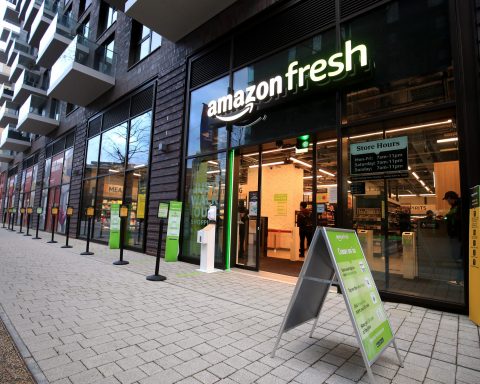As companies gear up for another competitive year, building a robust sales pipeline remains one of the most critical challenges for B2B businesses. Whether you’re a startup founder or a seasoned sales leader, the race to fill your pipeline with qualified prospects is relentless. What’s clear heading into 2024 is that traditional tactics alone won’t cut it. Instead, companies are embracing creative, cross-functional approaches to ensure their pipelines stay full and conversion rates remain high.
This report explores the top trends and strategies for building a powerful sales pipeline, with insights from industry leaders like Kyle Poyar, CROs, and CMOs from Carta, G2, Jellyfish, Miro, and many others. These actionable ideas are designed to drive pipeline growth and help your business thrive in the coming year.
Despite the rapid rise of digital marketing and AI-driven strategies, events remain a cornerstone of pipeline generation for many B2B companies. As Kyle Poyar, Operating Partner at OpenView, explains, “Events are the top area where revenue leaders say they’re doubling down for H2. Whether virtual or in-person, they consistently deliver strong results.”
The pandemic may have temporarily shifted the focus to virtual events, but their staying power is undeniable. Kyle Lacy, CMO at Jellyfish, shared an impressive stat: “Our virtual conference produced a 28x return on investment to pipeline generation, far outpacing any other channel in our marketing mix.”
But it’s not just about large-scale events. Small, intimate gatherings are making waves too. Dan Fahy, VP of Sales at Memo, highlighted the success of their dinner events: “We host 10-15 prospective buyers at each dinner, and about 80% of attendees end up taking a sales meeting with us. From those, 25-40% convert into qualified leads or closed deals. That’s a huge win.”
Carta’s CRO, Jeff Perry, also praised the effectiveness of blending events with targeted outreach. “Over the past six months, we’ve hosted 17 events, including everything from dinners to happy hours and sporting events. By involving our executive team and leveraging personal invites, we’ve influenced over $2.5M in pipeline.”
This push for experiential, in-person events is also seen at Miro. Adam Carr, Head of Global Sales, shared their approach: “We’re hosting 15-20 events per quarter—everything from large trade shows to smaller Miro experience days and happy hours. These events give us a chance to connect with target personas and strategically map those back to the pipeline.”
The days of isolated marketing or sales teams are over. In 2024, cross-functional orchestration is key to pipeline success. As Eric Gilpin, CRO at G2, emphasized, “Our tiered account strategy is rooted in a propensity score based on 30+ attributes. By unifying product, marketing, and sales, we’ve developed a strategy that accelerates new business, reduces churn, and drives expansion revenue.”
What sets this approach apart is how it mobilizes every relevant team member to ensure engagement with key accounts. Sasha Anderson, VP of Customer Success at Procore Technologies, detailed their playbook: “We’ve created five or six distinct plays, each with associated offers, and our entire account team is trained to pitch them. Whether it’s an AE, a BDR, or a CS rep, the person with the closest relationship leads the conversation. This white-glove experience is crucial for conversion consistency.”
For some companies, account-based marketing (ABM) also means focusing on expansion opportunities within existing accounts. James Kaikis, Head of Go-To-Market at TestBox, said, “We’ve been laser-focused on specific categories like revenue intelligence. It’s incredible how nearly every company in that space is either a customer or in an active sales process with us. By highlighting their wins and creating custom landing pages, we’re creating a strong FOMO effect within competitive categories.”
Cold calling and email aren’t dead, but they need an overhaul to break through the increasing noise in the B2B space. Brandon Redlinger, VP of Marketing at Chili Piper, shared an innovative approach: “We started using SDR personal pages, which significantly reduced friction for prospects. This personalized touch led to 80 qualified meetings, generating $340,000 in pipeline. Prospects are less likely to ghost someone they feel they know.”
Outbound creativity isn’t limited to SDR pages. Ralph Barsi, VP of Sales at Kahua, emphasized the importance of company-wide prospecting days: “We’ve held 10 company-wide prospecting days, adding nearly 80 new opportunities to our pipeline. Everyone participates, and we hold ourselves accountable for generating new pipeline.”
Data mining and relationship mapping are also becoming key components of outbound strategies. Samantha McKenna, founder of #samsales Consulting, explained how relationship-based prospecting can be a game-changer: “We run plays based on deep mining of LinkedIn Sales Navigator data. For example, we ask, ‘Who worked for our company that now works in my territory?’ or ‘Who do my execs know that works in my territory?’ These simple tactics can open doors that cold calls might not.”
Pricing strategies have always been a lever for growth, but 2024 is seeing a shift toward flexible, modular pricing that supports both customer acquisition and expansion. Alex Poulos, CMO at Crossbeam, put it bluntly: “Pricing and packaging is the most underestimated lever by GTM teams. We introduced usage-based pricing and removed legacy pricing floors, resulting in a 3x increase in self-serve conversions and a 65% boost in quarterly expansion revenue.”
For companies like Superhuman, even the pilot phase is being rethought. Andrew Johnston, Head of Sales, shared: “We’ve committed to a ‘no free pilots’ rule. Even if it’s just a nominal fee, it ensures ownership from both sides and helps set up future expansion. This strategy significantly reduces churn and creates a stronger relationship from the start.”
A growing number of sales leaders are recognizing the value of founder-led content in driving pipeline. Andrew McGuire, Founder and Pipeline Strategy Advisor, was surprised more companies haven’t adopted this tactic: “Founder-qualified leads through producing LinkedIn content is becoming one of the best channels for highly qualified pipeline. Founders have a unique voice that can cut through the noise, and when they create authentic content, it drives engagement in ways traditional marketing doesn’t.”
This approach works especially well for companies still in the early stages, where the founder’s voice can carry significant weight. As Samantha McKenna added, “Prospects today want to feel connected to the people behind the brand. A founder’s personal touch through content can build that relationship before any sales conversation even begins.”
In 2024, data-driven decision-making is more important than ever, particularly when it comes to refining lead targeting. Kyle Poyar emphasizes that companies should “be relentless in testing and refining what works.” Data analytics tools allow for more precise targeting of leads, helping companies focus on the prospects most likely to convert.
Eric Gilpin of G2 shared how they use data to prioritize outreach efforts: “Our tiered account strategy, built on a propensity score from over 30 attributes, helps us know which accounts to target and when. This level of granularity ensures we’re reaching out to the right people at the right time.”
Automating repetitive tasks is another way to ensure your sales team is focused on what matters most. “We’ve automated follow-ups based on key triggers,” said Brandon Redlinger. “This frees up time for SDRs to focus on higher-value activities and ensures that no lead falls through the cracks.”
Finally, one of the most critical factors in building a successful pipeline is ensuring alignment between sales and marketing teams. “Without seamless communication, you end up with wasted leads and lost opportunities,” said Sasha Anderson at Procore. “We’ve created a unified revenue play experience where both sales and marketing are trained on the offers and can seamlessly hand off leads depending on where they are in the funnel.”
Eric Gilpin echoed this sentiment: “At G2, we’ve worked hard to ensure marketing and sales are completely aligned, from messaging to metrics. This coordination has been essential in keeping our pipeline healthy and conversion rates consistent.”
As companies push to hit aggressive revenue targets in 2024, the importance of building a robust, sustainable sales pipeline cannot be overstated. From leveraging events and account-based plays to revisiting pricing models and using creative outbound strategies, the playbook for pipeline success is evolving. As Kyle Poyar reminds us, “The key is to be relentless in testing and refining what works. Every touchpoint should drive pipeline growth, and every strategy should be tied to clear, measurable outcomes.”
By embracing cross-functional collaboration, personalized outbound approaches, and data-driven tactics, companies can ensure their pipelines remain full and conversions high, setting the stage for a strong year ahead.








